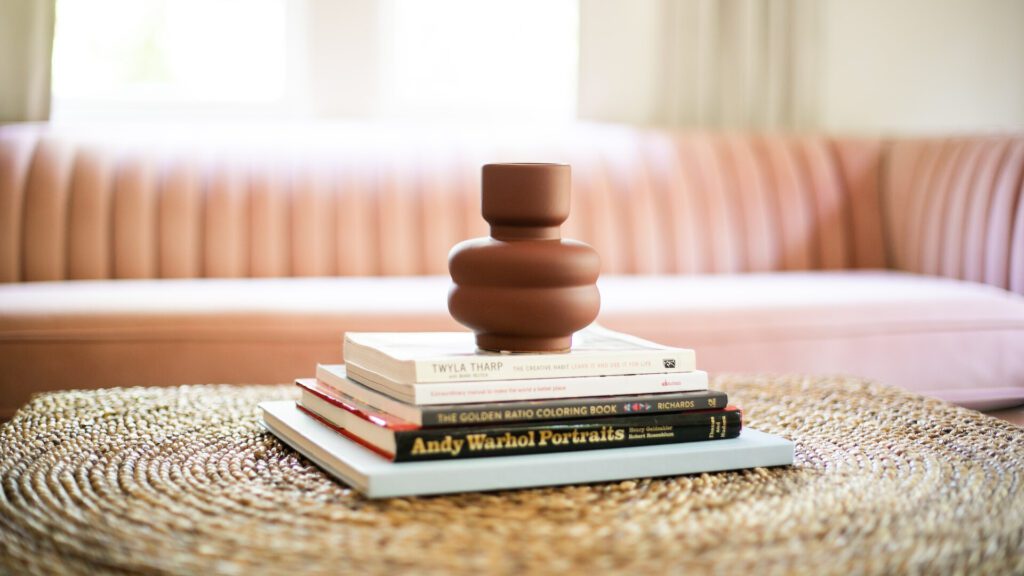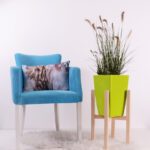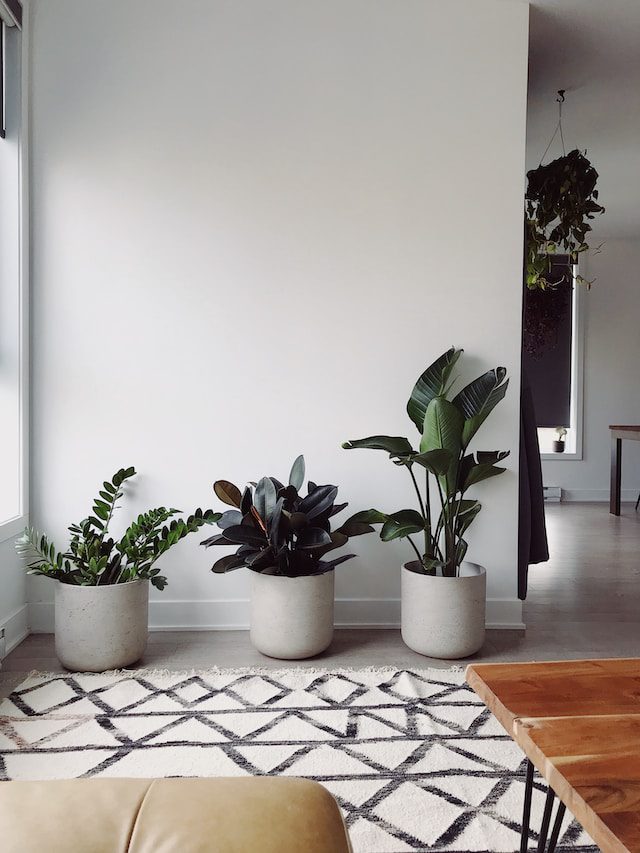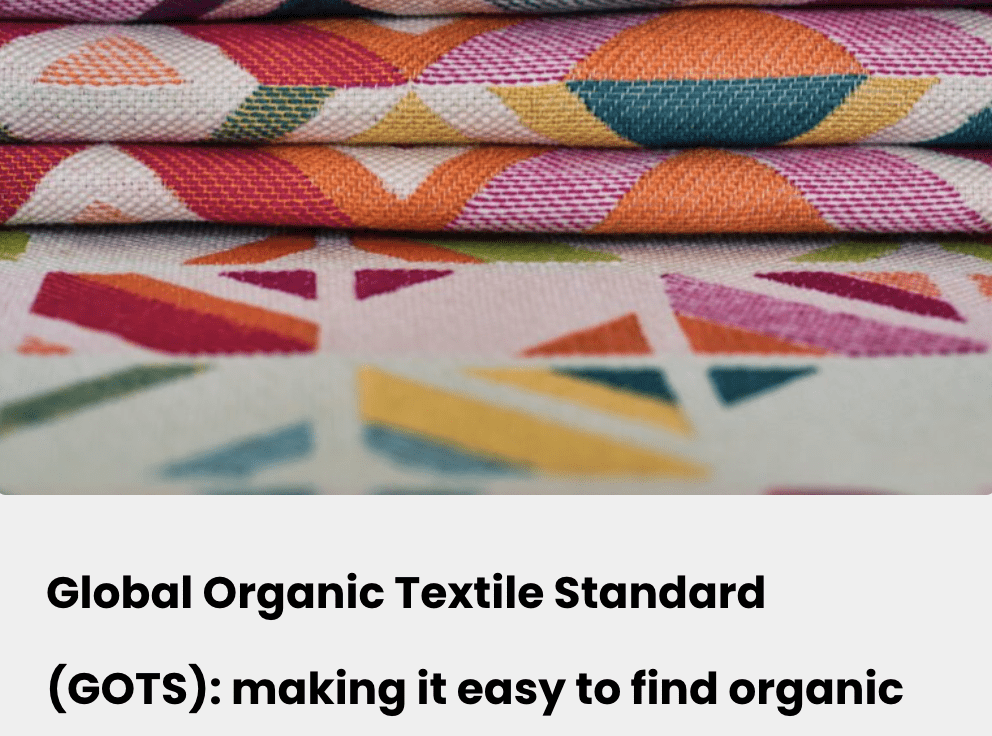
The ultimate guide to sustainable home decor
In this post, we share guidance on how to find sustainable home decor including some things to look for and also some things to avoid.
Disclosure: The Home Green is reader-supported and may receive a commission if you decide to make a purchase through a posted link, at no cost to you.
Welcome to our guide on how to add sustainable finishing touches to your home. In today's world, being environmentally conscious is more important than ever, but it can seem harder than ever, too. We hope that with our tips and suggestions, you'll be able to transform your living space into a haven that not only reflects your personal style but your personal values, as well.
When it comes to sustainable home decor, we believe in the power of conscious commerce meaning that shopping from responsible manufacturers is itself a vote for a more sustainable future. And luckily for all of us, there are a lot of great options available these days that mean you don’t have to choose between the look you want and being eco-friendly.
Whether you're starting from scratch or looking to make small changes, this guide is designed to equip you with the knowledge and inspiration to create a beautiful and sustainable home that you can be proud of.
Understanding sustainable home decor
In selecting sustainable home decor, making conscious choices to selecting products that minimize harm to the environment is key. This can be through reduced waste, energy conservation, or preserving natural resources.
For example, instead of opting for products made from non-renewable resources such as plastic and metal, consider investing in furniture and accessories made from sustainable materials like bamboo, reclaimed wood, or recycled plastic. (for more information on specific materials to look for and also things to avoid, check out our FAQs, below)
It’s also import to consider the longevity of the products that you buy. Investing in high-quality, durable furniture and accessories means that you won't have to replace them frequently, reducing waste and saving money in the long run. Focusing on sustainable home decor can lead to choices that have a positive impact on both the environment and potentially your wallet, too.
Benefits of sustainable home decor
There are so many benefits to embracing sustainable home decor. They include:
Reduced environmental impact


There are numerous ways that the production of home decor can have harmful impacts on the planet including through a product’s carbon footprint, pollution, waste/inefficiency, or exploitation of people involved in production. Shopping with environmentally conscious companies is a big step in reducing these negative impacts
Healthier home


By choosing eco-friendly materials and products, you can minimize the use of harmful chemicals and toxins used in manufacturing. This not only decreases potential environmental harm and also reduces your family’s exposure to unhealthy substances.
Energy efficiency


By opting for energy-efficient appliances and lighting fixtures, you can significantly reduce your energy consumption and lower your utility bills. Additionally, incorporating natural lighting through the use of larger windows, skylights, or solar tubes not only saves energy but also creates a warm and inviting atmosphere in your home.
Self-expression


With a wide range of eco-friendly furniture, textiles, and accessories available, it’s very possible to create a unique and beautiful living space that reflects your values and taste. Sustainable home decor is not just about being green, it's about creating a home that you feel good in and about.
Choosing sustainable materials for furniture and accessories
When it comes to sustainable home decor, materials play an important role. Opt for items made from sustainable materials like bamboo, rattan, or reclaimed wood. These materials are not only eco-friendly but also add texture and natural beauty to your home.
For upholstery and textiles, natural and organic fabrics like cotton, linen, or hemp are a great choice. These materials are less likely to contain harmful chemicals and pesticides, making them a healthier choice for you and the environment. You could also consider investing in furniture with removable and washable covers (particularly if you have kids or pets!) to prolong their lifespan and reduce the need for replacements.
When it comes to accessories, opt for items made from recycled and recyclable materials, such as glass or metal, whenever possible. Look for brands and designers who prioritize sustainability and transparency in their production process.
Eco-friendly paint and wallpaper options
Painting your walls or adding wallpaper is one of the fastest ways to transform the look of your space. Unfortunately, conventional paints and wallpapers often contain harmful chemicals known as volatile organic compounds (VOCs). These chemicals can contribute to poor indoor air quality and have negative health effects.
To avoid these harmful effects, opt for more eco-friendly paint options that are low in VOCs or completely VOC-free. These paints are made from natural ingredients and are safer for both your health and the environment. Many of the most popular, high quality paint manufacturers offer low or no VOC option. Some suppliers like, ECOS, specialize in green options.
Similarly, when choosing wallpaper, do a little investigation to make sure that what you are buying is safe. Look for options that are made using non-toxic inks, recycled materials or are produced using eco-friendly manufacturing processes. Often, even if a wallpaper isn’t listed as non-toxic, the manufacturer is able to provide details that can help you better understand these important details.
Incorporating natural lighting and energy-efficient lighting fixtures
Lighting plays a surprisingly important role in creating a welcoming and sustainable home. Maximizing natural light not only reduces the need for artificial lighting during the day but also creates a warm and inviting atmosphere. Consider adding larger windows, skylights, or solar tubes to bring in more natural light into your living space.
When it comes to artificial lighting, opt for energy-efficient fixtures like LED bulbs. LED bulbs consume significantly less energy compared to traditional incandescent bulbs and have a longer lifespan, reducing the need for frequent replacements. Additionally, consider installing dimmer switches to adjust the intensity of the light based on your needs, saving energy and creating a cozy ambiance
Indoor plants and sustainable gardening: great sources of sustainable home decor


Incorporating indoor plants into your home not only adds a touch of nature but may also improve your air quality. Many plants act as natural air purifiers by absorbing carbon dioxide and releasing oxygen. Choosing low-maintenance plants that are suitable for indoor environments and require minimal watering and care can be a great entry into being a plant parent. (Be sure to research plant toxicity if you have small children or pets.)
Planters themselves can be a great place to add a little flair to your space. And while brand-new store-bought options can be pricey, there are lots of places where you can find reasonably priced alternatives.
Venturing slightly outside your interior, it can be a fun project to grow your own flowers, herbs, vegetables, or fruits. This not only reduces your reliance on store-bought produce but also promotes organic and pesticide-free gardening. And, bonus, your garden can be a great source of indoor decor in the form of a vase of flowers, bowl of fruit, or fall tablescape of colorful leaves and pumpkins.
Upcycling and repurposing furniture and accessories
One of the most sustainable practices in home decor is upcycling and repurposing furniture and accessories. Instead of throwing away old or worn-out items, consider giving them a new life by refurbishing or repurposing them. Paint old furniture in a fresh color, reupholster chairs with new fabrics, or transform old jars into stylish storage containers.
Once you get started repurposing, you may even find it to be fun. A quick search on instagram can supply hours of mind-blowing ideas and examples of ways that other people have gotten creative repairing old furniture and repurposing things like old books.
One of our favorite easy sources of inexpensive and sustainable decor is children’s artwork. If you have children, grandchildren, nieces or nephews, or other special kiddos in your life, displaying their creations can add color and a little playfulness to your home. Check out our full article on displaying children’s artwork for ideas.
A summary: 15 things to look for when shopping for sustainable home decor
Hopefully, you now have an idea of just how many ways you can find sustainable decor for your home. We’ve included a summary, below, of the key elements of sustainable home decor for quick reference.
- Materials – Look for materials that are naturally sustainable like bamboo, sustainably grown wood, and organic textiles such as cotton, hemp, or linen.
- Recycled and Upcycled Products – Seek out items that are made from recycled or upcycled materials like reclaimed wood, or recycled glass, paper, or plastic. These products often have a lower environmental impact because they divert waste from landfills and reduce the need for new raw materials.
- Low-VOC and Non-Toxic Finishes – Check whether paints, finishes, and adhesives used on furniture and decor items are low in volatile organic compounds (VOCs) or free from toxic chemicals. These products contribute to better indoor air quality and a healthier living environment.
- Certifications – Sustainable certifications on products make it easier to feel confident that sustainability claims are not actually greenwashing. For example, products certified by organizations like the Forest Stewardship Council (FSC), Global Organic Textile Standard (GOTS), or Fair Trade may indicate that the item meets specific environmental or social responsibility standards.
- Local and Artisanal Products – Whenever possible, support local artisans and craftsmen. Locally sourced products often have a smaller carbon footprint because they require less transportation. Look for local craft fairs, art galleries, or check out Etsy if you’re not having luck in your immediate area.
- Energy Efficiency – If your decor includes lighting or appliances, opt for energy-efficient models. Look for the ENERGY STAR label on appliances and LED or CFL bulbs for lighting.
- Minimalism and Quality – Adopt a minimalist approach to decor and prioritize quality over quantity. Choose items that you truly love and that have lasting appeal, reducing the need for constant updates and replacements.
- Indoor Plants – Incorporate indoor plants into your decor. They not only add a natural and refreshing touch but also improve indoor air quality.
- Packaging – Pay attention to the packaging of the products you buy. Look for sellers who share their focus on using less and/or recycled packaging.
- Second-Hand and Vintage – Consider shopping for second-hand or vintage decor items and used furniture. These items not only have a unique charm but also promote sustainability by extending the life of existing products.
- Waste Reduction – Think about how easily the decor items can be recycled or repurposed at the end of their life cycle. Items that are difficult to dispose of responsibly should be avoided.
- Research Brands – Learn about the sustainability practices of the brands you're interested in. Many companies now publish information about their environmental and social responsibility initiatives on their websites. Check out our full article on our favorite sustainable furniture companies.
- DIY and Upcycling – Explore do-it-yourself (DIY) projects and upcycling opportunities to create unique decor items from existing materials or objects.
Sustainable home decor brands and retailers we love
There are numerous sustainable home decor brands and retailers that offer a wide range of eco-friendly products. Do some research and choose brands that align with your values and aesthetic preferences. By supporting these brands, you are not only contributing to a more sustainable future but also sending a message to the industry that sustainability matters.
For a full rundown of sustainable furniture manufacturers, check out our complete guide. It covers well-known brands like Pottery Barn and West Elm, as well as some gems you may not have heard of yet like Sabai, Burrow, and Medley.
If you’re open to second-hand furniture there are so many great brands in that space, too. You may think thrift shops and Facebook Marketplace are your only options, but you’ll be glad to know there are some online shops where you can find next-to-new furniture at a fraction of the price. Check them out in our article: The ultimate guide to the best used online furniture stores.
Looking specifically for decorative items? These are our favorites:
- Etsy always tops our list! It’s a great place to find unique, handmade, high-quality sustainable decor. Etsy takes a serious stance on sustainability and offsets carbon emissions as a result of shipping from all of its items.
- Spoonflower is second to none when it comes to accessible and gorgeous textiles. What makes us love them even more is how they prioritize their corporate sustainability. They print on demand, which means that things like fabric and wallpaper are only created when someone orders them. This minimizes wasted raw materials. Additionally, they strive to use non-toxic inks and dyes.
- The Citizenry – The Citizenry sources products from all over the world and has a particular focus on the artists who create the items they sell. Categories included at The Citizenry include furniture, vases, bedding, rugs, baskets and much more. If you love a modern boho look, you’ll love The Citizenry.
- Made Trade – Made Trade is another marketplace of vendors with a focus on sustainable goods. Their products include an impressive assortment of home goods, furniture, bedding, and textiles as well as clothing and accessories.
- Goodee – Goodee is a socially-conscious online retailer that curates a selection of sustainable and ethically-made home goods, aiming to create a positive impact on communities and the environment. Founded by designers Byron and Dexter Peart, Goodee emphasizes transparency, craftsmanship, and design.
Conclusion: creating a beautiful and sustainable home
Creating a beautiful and sustainable home is all about making conscious choices that have a positive impact on both the environment and your well-being. By opting for sustainable decor, you can create a space reflects your style and your values.
Join us on this journey towards a more sustainable future, one stylish and eco-friendly choice at a time. Let's create homes that not only inspire us but also inspire others to make environmentally conscious decisions. Together, we can make a difference and create a world where sustainability and beauty go hand in hand.
FAQs
What is sustainable home decor?
Sustainable home decor refers to the use of environmentally friendly and socially responsible practices and materials in decorating your home. The goal of sustainable home decor is to reduce the negative impact on the environment, promote ethical sourcing and production, create a healthier living space for both residents and the planet and generally create more a more sustainable interior design for your home.
What should I avoid in shopping for sustainable home decor?
Several home decor items can be harmful to the environment due to the materials they are made from, their production processes, or their potential negative impacts on the ecosystem. Here are some examples of such items:
- Plastic Decorations – Plastic decor items, especially those made from single-use or non-recyclable plastics, contribute to plastic pollution. They often end up in landfills or the ocean, harming wildlife and ecosystems.
- Non-Recyclable Styrofoam – Decor items or packaging made from non-recyclable expanded polystyrene (commonly known as Styrofoam) are harmful to the environment. Styrofoam takes a long time to break down and is a persistent pollutant.
- Vinyl or PVC Materials – Products made from polyvinyl chloride (PVC or vinyl) can release toxic chemicals during production, use, and disposal. PVC is difficult to recycle and may release harmful substances when incinerated.
- Laminate Furniture – Furniture made with laminates often contains adhesives and finishes that can emit harmful chemicals, including formaldehyde. Additionally, laminates can be difficult to recycle due to their composite nature.
- Particleboard and MDF Furniture – Furniture made from particleboard or medium-density fiberboard (MDF) often contains adhesives and resins that release formaldehyde and other VOCs. These materials may also be challenging to recycle.
- Chemically Treated Fabrics – Fabrics treated with flame retardants, stain repellents, or other chemical coatings can release harmful chemicals into the environment. Additionally, the production of these chemicals can have negative environmental impacts.
- Non-Eco-Friendly Paints and Finishes – Paints, varnishes, and finishes that contain high levels of volatile organic compounds (VOCs) contribute to indoor air pollution and have adverse effects on human health and the environment.
- Candles with Lead Wicks – While we’re usually strongly in favor of thrifting, be cautious using old candles (anything made before 2003). Candles with lead wicks, which were once common, can release harmful lead emissions when burned. Lead exposure is detrimental to human health and the environment.
- Non-Eco-Friendly Flooring – Certain types of flooring, such as vinyl flooring, can contain harmful chemicals and toxins like phthalates and formaldehyde. These chemicals can be released into the air over time.
- Non-Eco-Friendly Insulation – Some types of insulation materials, such as foam insulations, can release harmful gases during production and have adverse environmental effects.
- Traditional glitter- Not glitter! Unfortunately, traditional glitter made from plastic is harmful to the environment as it is not biodegradable and can contaminate water sources and harm marine life. There are so biodegradable glitters now available so check before buying!
Articles you may enjoy
Free tips and inspiration in your inbox
Enter your email address below to receive the latest news from The Home Green.



